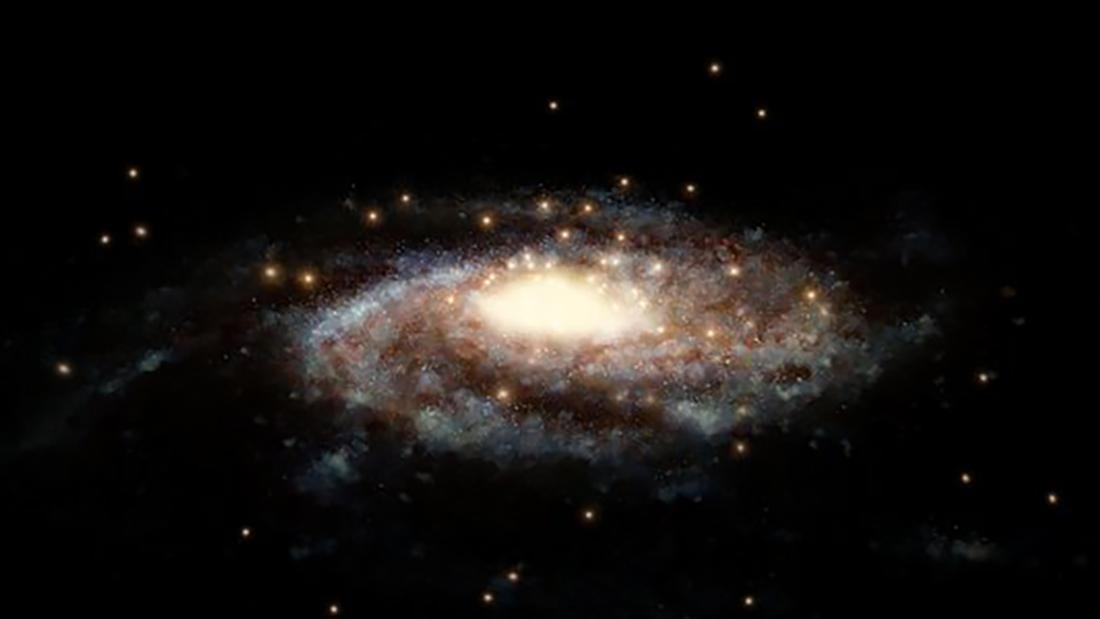How much weight would the Milky Way weigh if the Milky Way could be weighed?

One solar mass is the mass of our sun, which is 2 times 10 to the 30th power kilograms. It’s not exactly as if the Milky Way, or even stars and planets, can be put on a scale.”We want to know the mass of the Milky Way more accurately so that we can put it into a cosmological context and compare it to simulations of galaxies in the evolving universe,” Roeland van der Marel, head of the Wide Field Infrared Survey Telescope mission office at the Space Telescope Science Institute, said in a statement. “Not knowing the precise mass of the Milky Way presents a problem for a lot of cosmological questions.”So where does all of that weight come from? Surprisingly, only a small percentage of this is due to the galaxy’s 200 billion stars and the 4 million-solar-mass supermassive black hole at the center. The rest of it is due to dark matter, that elusive substance that holds the universe together. Astronomers are still trying to find evidence of dark matter to see whether it’s a particle or something else. But they know that it’s present, even if it can’t be detected yet.Previously, the Milky Way was estimated to be between 500 billion and 3 trillion solar masses; this new estimate is in the middle of the range, which was determined several decades ago using a variety of observations.Hubble and Gaia took observations that complemented each other to create a holistic view of the galaxy. Gaia has been creating a 3D map of the galaxy’s astronomical objects and tracking their movements since its mission began in 2014. Those objects include globular star clusters, spheres full of hundreds of thousands of stars that orbit our galactic center. Gaia can look at all of the sky, but Hubble has a smaller view. The space telescope uses that to its advantage by measuring fainter stars and distant clusters. Gaia measured 34 globular clusters to about 65,000 light-years out, while Hubble measured 12 clusters to 130,000 light-years away over the past 10 years.Together, Gaia and Hubble could capture the sideways motion of the clusters, which shows gravitational acceleration. Massive galaxies have faster-moving clusters due to the enormous amount of gravity involved. Combining the data from the measurements allowed astronomers to estimate the galaxy’s mass as far as 1 million light-years from Earth. “The more massive a galaxy, the faster its clusters move under the pull of its gravity,” N. Wyn Evans, professor at the University of Cambridge’s Institute of Astronomy, said in a statement. “Most previous measurements have found the speed at which a cluster is approaching or receding from Earth, that is the velocity along our line of sight. However, we were able to also measure the sideways motion of the clusters, from which the total velocity, and consequently the galactic mass, can be calculated.” The clusters are key because they contain the oldest stars, born just a few hundred million years after the big bang.”Because of their great distances, globular star clusters are some of the best tracers astronomers have to measure the mass of the vast envelope of dark matter surrounding our galaxy far beyond the spiral disk of stars,” said a statement from the Space Telescope Science Institute’s Tony Sohn, who led the Hubble measurements.And as far as galaxies go, ours is a heavy one compared with others, but it’s also appropriate considering how bright it is. Lighter galaxies weigh in at around a billion solar masses. The heaviest are 30 trillion solar masses. The Milky Way isn’t exactly the easiest thing to study, even if it’s our galaxy. “We just can’t detect dark matter directly,” Laura Watkins, who led the analysis at the European Southern Observatory, said in a statement. “That’s what leads to the present uncertainty in the Milky Way’s mass — you can’t measure accurately what you can’t see!”Van der Marel added, “We were lucky to have such a great combination of data. We could pin down the Milky Way’s mass in a way that would be impossible without these two space telescopes.”







